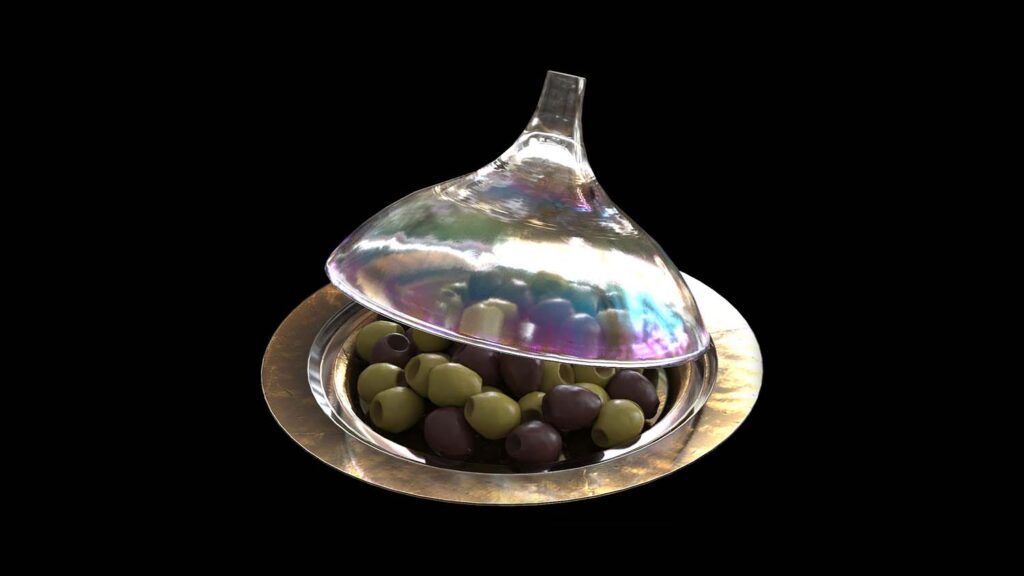New glTF extensions supporting refraction, colour attenuation, and volumetric properties have been added by the Khronos Group‘s open consortium for 3D graphics standards, and are already shipping in some viewers and renderers.
The new glTF extensions enable material properties to be used by diverse renderers from real-time rasterisation to production-class path-tracing.
glTF is a flexible, royalty-free asset format from Khronos designed for efficient run-time transmission and loading of 3D scenes and models on a wide variety of platforms including web browsers, mobile devices, PC desktops and the cloud.
Leading rendering engines such as Babylon.js, Google’s Filament, and three.js already support some or all of the new PBR extensions, together with applications including Adobe’s Dimension, Dassault Systèmes 3DExperience Platform, DGG RapidCompact and UX3D’s Gestaltor.
“These enhancements to glTF’s PBR model raise the bar for material compatibility between ray-traced, path-traced, and real-time rendering implementations,” said Ed Mackey of Analytical Graphics and 3D Formats PBR task sub group chair. “They enable more realistic assets including volumetric effects, while remaining inclusive of real-time engines and viewers.
“We welcome artists and developers to use these new features for their own 3D assets. Khronos is now working on the next two PBR extensions: ‘Thin Film’ and ‘Translucency’ and we welcome industry and community feedback.”
Physically Based Rendering creates realistic results by modelling the physical properties of real-world objects enabling developers and artists to create photorealistic 3D assets by controlling parameters that correspond to the physical properties of actual materials.
The three new extensions build on and extend the existing glTF 2.0 PBR capabilities by adding refraction, volume-based absorption, and complex specular reflections.
● KHR_materials_ior: Index of Refraction describes how light is scattered as it passes through an object. By enabling artists to control IOR values, a diverse range of transparent materials can be made to look more realistic, including air, water, eyes, glass, sapphire, and diamond.
● KHR_materials_volume: The volume extension enables mesh surfaces to act as an interface between volumes and to enable more realistic refraction and absorption properties as seen in transparent materials. This extension gives translucent materials the appearance of depth and heft. For real-time engines incapable of ray-tracing, this extension also supplies a thickness texture map, to enable fast approximations of light interacting with a volume of material.
● KHR_materials_specular: Specular properties are an object’s mirror-like properties: its ability to reflect light regularly, creating coherent reflections of other objects. Unlike its predecessor KHR_materials_pbrSpecularGlossiness, this new specular extension operates within the modern metallic/roughness workflow at the core of glTF’s PBR material model, enabling colored specular highlights compatible across the array of advanced PBR material extensions.
Khronos Group says that these extensions allow a wider range of scenes and objects to be represented realistically as 3D assets. For example, they enable artists to create more beautifully lit virtual photoshoots of products for e-commerce.
“Online shoppers increasingly expect realistic, beautiful product imagery to be part of their online experience — no matter what platform they’re using,” said Shrenik Sadalgi of Wayfair and Khronos 3D Commerce working group chair.
“This latest set of PBR features is a game changer for retailers, especially those in style-oriented categories like ‘Home’, who need their product models to stand out with the most visually realistic materials. glTF has long been the most universally portable 3D real-time file format, and as glTF’s PBR model matures, the power of 3D objects to catch consumers’ eyes and capture their imaginations will only grow.”
Dr. Jan Meseth, holistic visualisation technology director, Dassault Systèmes, added: “Getting consistent renderings of shiny objects from real-time and offline engines has been an open problem for way too long. This problem was even more pronounced for realistic-looking transparent objects made from materials like glass, sapphire, or diamond.
“I am extremely happy that this second wave of glTF PBR extensions addresses this problem by introducing a state-of-the-art, yet widely acknowledged standard. This will turn out to be another fundamental cornerstone for reliable product visualisation.”






